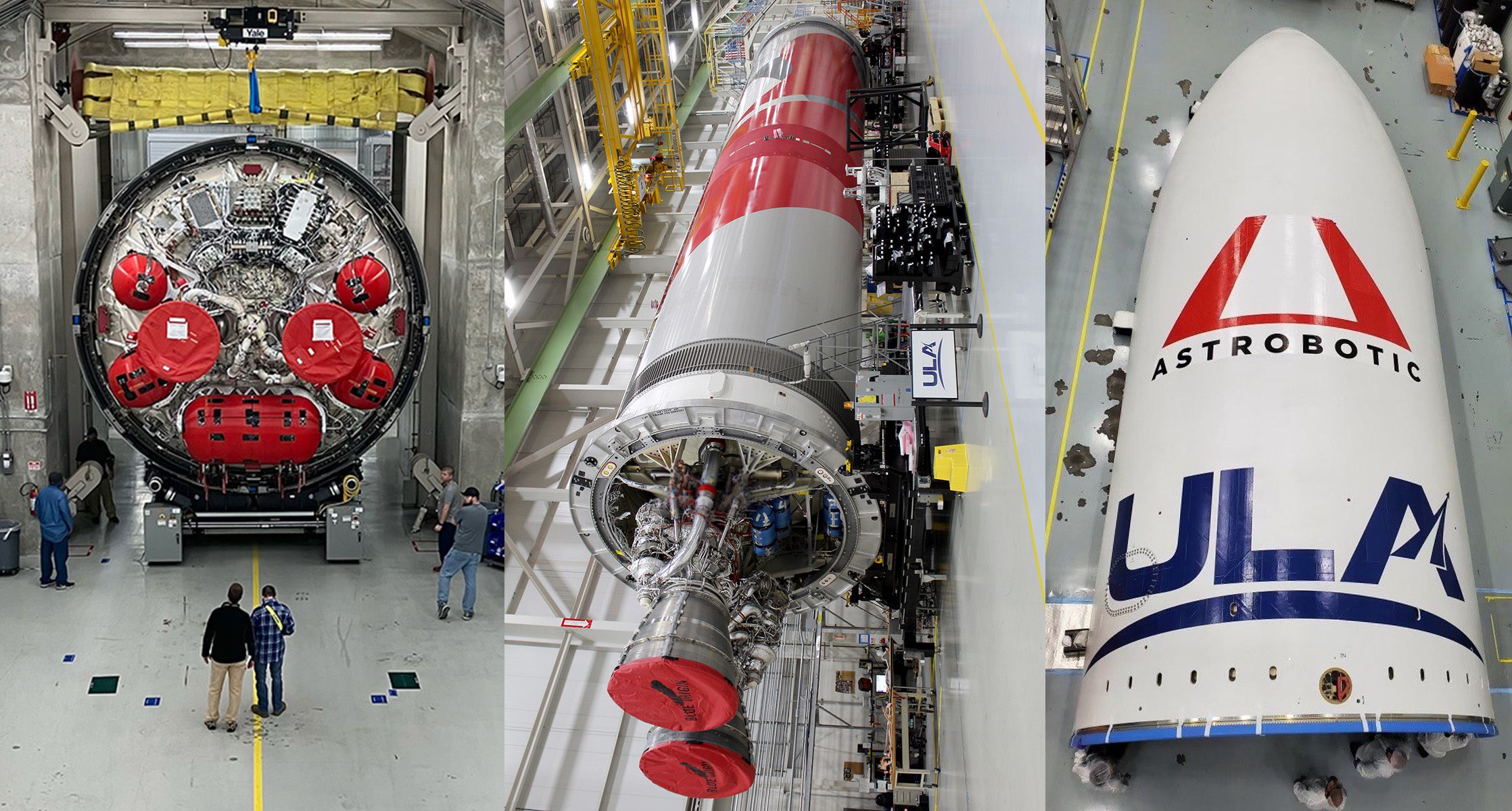
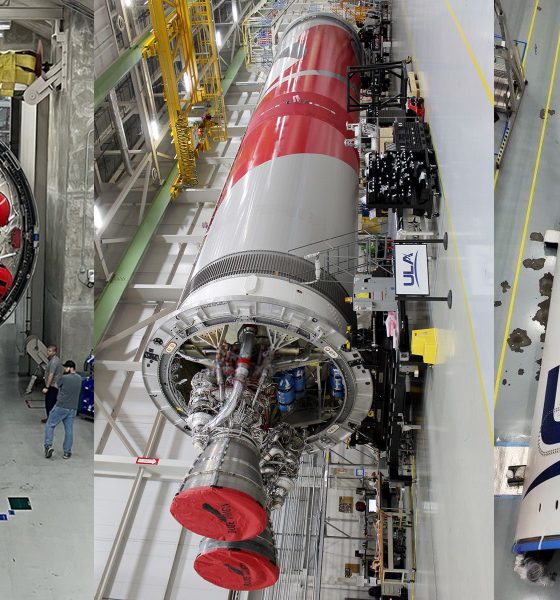
News
ULA set to ship Vulcan rocket to Florida for Moon lander launch
After many years of delays, all the parts of the United Launch Alliance’s next-generation Vulcan Centaur rocket are about to converge on Florida for their first launch.
Unveiled in 2015, ULA has been working on Vulcan Centaur since at least 2014. Following Russia’s first illegal invasion of Ukraine, countries around the world attempted to punish the aggressor mainly through economic sanctions. In the US, those sanctions included bans on the import of most Russian aerospace technologies, including the RD-180 engines that still power ULA’s Atlas V workhorse rocket in 2023. In 2014, ULA announced that it would work with Blue Origin to integrate the startup’s BE-4 engine into a new rocket booster to end its reliance on Russian engines.
More than eight years later, that BE-4 engine is finally ready for flight, and the rest of the first two-stage Vulcan rocket appears to be right behind it.
The update that's rolling out to the fleet makes full use of the front and rear steering travel to minimize turning circle. In this case a reduction of 1.6 feet just over the air— Wes (@wmorrill3) April 16, 2024
Eastward-bound
In a burst of New Year activity, CEO Tory Bruno confirmed that Vulcan Flight 1’s core stage (booster) has been fully assembled, buttoned up, and loaded onto ULA’s transport ship. The aptly named RocketShip will ferry the booster from ULA’s Decatur, Alabama factory to Cape Canaveral, Florida, where it will enter the final stages of launch preparation at the company’s Cape Canaveral Space Force Station (CCSFS) LC-41 pad.
Simultaneously, ULA has finished proof testing Vulcan’s first Centaur V upper stage, a larger and more advanced version of the Centaur III stage ULA and its predecessors have been flying for decades. Centaur V is almost twice as wide as Centaur III and is designed to hold two and a half times more propellant, enabling significantly higher performance in some scenarios.
Additionally, while ULA has partially abandoned plans for a reusable upper stage called ACES (Advanced Cryogenic Evolved Stage), some of those improvements may still be added to Centaur V. Compared to Centaur III, Centaur V’s longevity in space will grow from 8 to 12 hours. ULA is also developing a “mission extension kit” that will allow it to operate for multiple months – unprecedented for a rocket stage powered by cryogenic propellant.
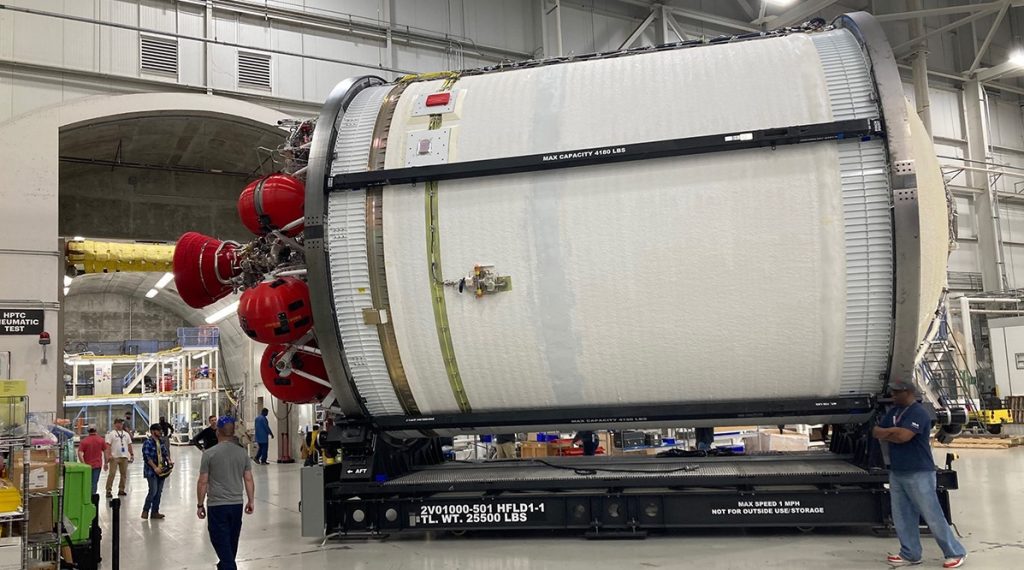
Photos taken by a local paper appear to indicate that ULA is shipping one or more payload fairing (nosecone) halves alongside Vulcan’s first flightworthy booster. While unconfirmed, it would make sense for ULA to ship Vulcan’s booster and fairing together. Another tweet from Tory Bruno indicates that ULA intends to ship Vulcan’s booster and upper stage together, increasing the odds that all components will be aboard RocketShip when it departs for Florida.
A New Workhorse
Vulcan Centaur is ultimately designed to fully replace ULA’s existing Delta IV and Atlas V rockets. Building and operating two very different rockets simultaneously is undoubtedly one of the reasons that ULA’s launch costs are so much higher than SpaceX’s, and simplifying to a single production line is one clear way to achieve major cost savings. ULA hopes that the simplest version of Vulcan will eventually cost about $100 million per launch – still far more than SpaceX’s base Falcon 9 price [PDF] but potentially more competitive than Atlas V. That’s unclear, though, as Bruno has previously stated that Atlas V’s launch costs have fallen to about $100 million apiece thanks to unrelated cost savings.
Regardless, Vulcan Centaur will be a capable rocket and its price is close enough to SpaceX’s extremely competitive Falcon 9 for it to be a mostly valid option for launch customers who want diversity or want to avoid SpaceX for less rational reasons. Vulcan has secured more than 70 launch contracts thanks to ULA’s intimate relationship with the US military and Amazon’s reluctance to launch its Project Kuiper internet satellites with the company behind Starlink, a direct competitor.
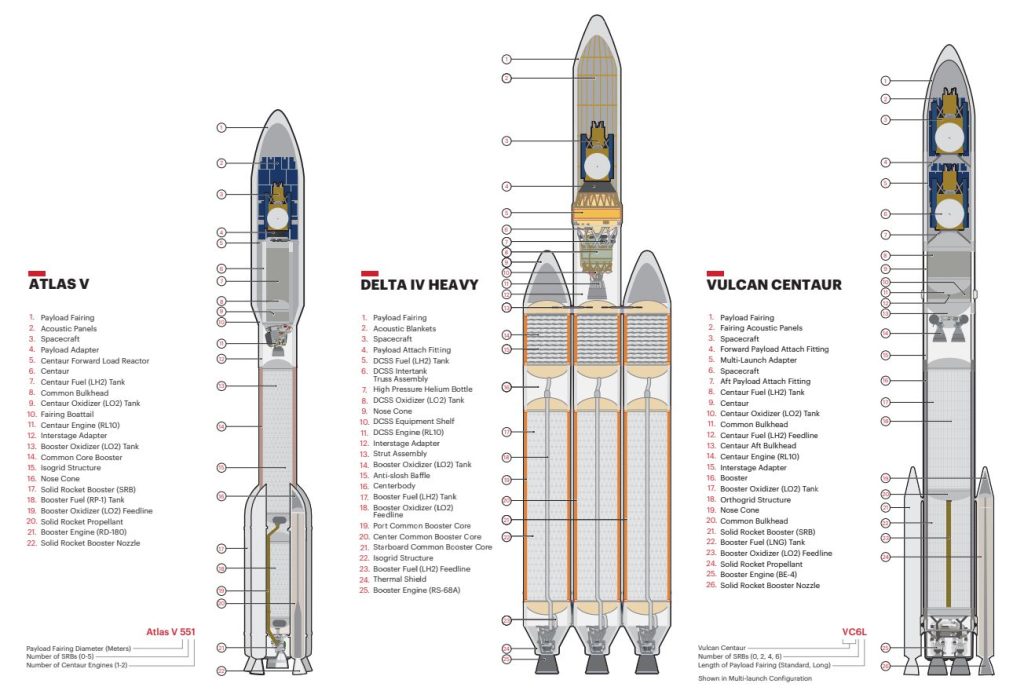
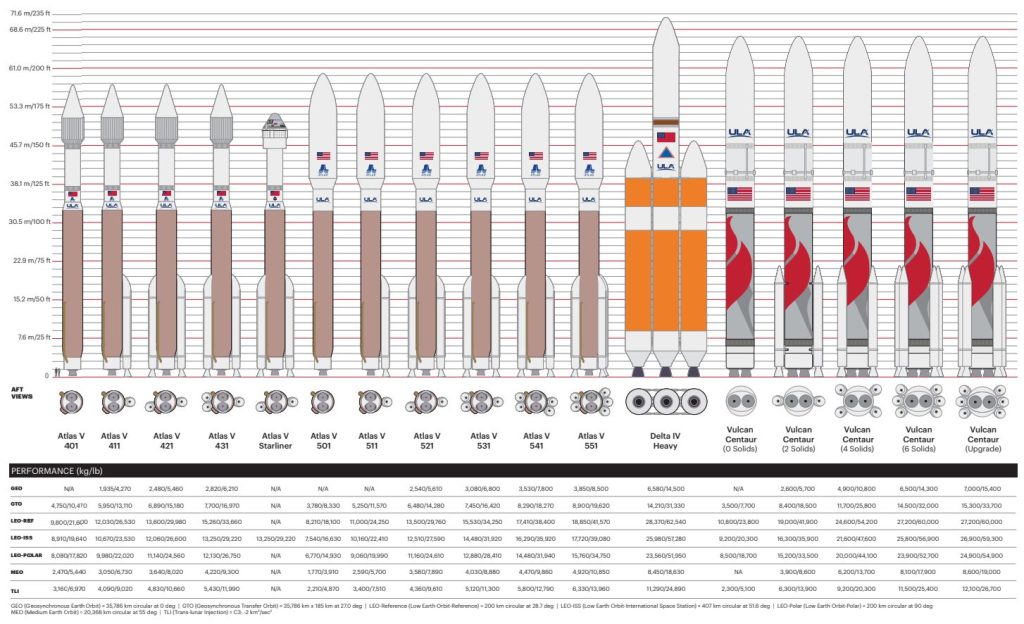
Fitted with two BE-4 engines, six solid rocket boosters (SRBs), and unknown upgrades, ULA says the most capable version of Vulcan Centaur will be able to launch up to 12.1 tons (26,700 lb) to the Moon, 15.3 tons (33,700 lb) to geostationary transfer orbit (GTO), and 27.2 tons (60,000 lb) to low Earth orbit (LEO). To high orbits, the most capable Vulcan variant will fairly competitive with SpaceX’s Falcon Heavy rocket. To low orbits, it will generally match or slightly exceed the performance of an expendable Falcon 9, but likely for a much higher price. By every measure, the simplest and cheapest Vulcan variant is significantly less capable than even a partially reusable Falcon 9 and will likely cost 50-100% more.
Moon or bust
Indicating ULA’s confidence in the unflown rocket, the main target of Vulcan’s first launch is the Moon. Vulcan Flight 1 will carry two main payloads: the first two Amazon Kuiper satellite prototypes and Pittsburgh startup Astrobotic’s first Peregrine Moon lander. After deploying both Kuiper satellites in low Earth orbit, Centaur V will fire up again and attempt to send the 1.3-ton (~2850 lb) Peregrine lander directly to the Moon – also known as a trans-lunar injection (TLI) burn. Developed as part of NASA’s Commercial Lunar Payload Services (CLPS) program, Peregrine will be tasked with entering orbit around the Moon and eventually landing up to 70-90 kilograms (150-200 lb) of payload on the lunar surface.
The first Peregrine Moon lander is fully assembled and currently in the middle of extensive integrated testing. If successful, ULA CEO Tory Bruno says that Vulcan will likely be ready to launch sometime in Q1 2023, though Q2 2023 is more likely.

News
Tesla dominates in the UK with Model Y and Model 3 leading the way
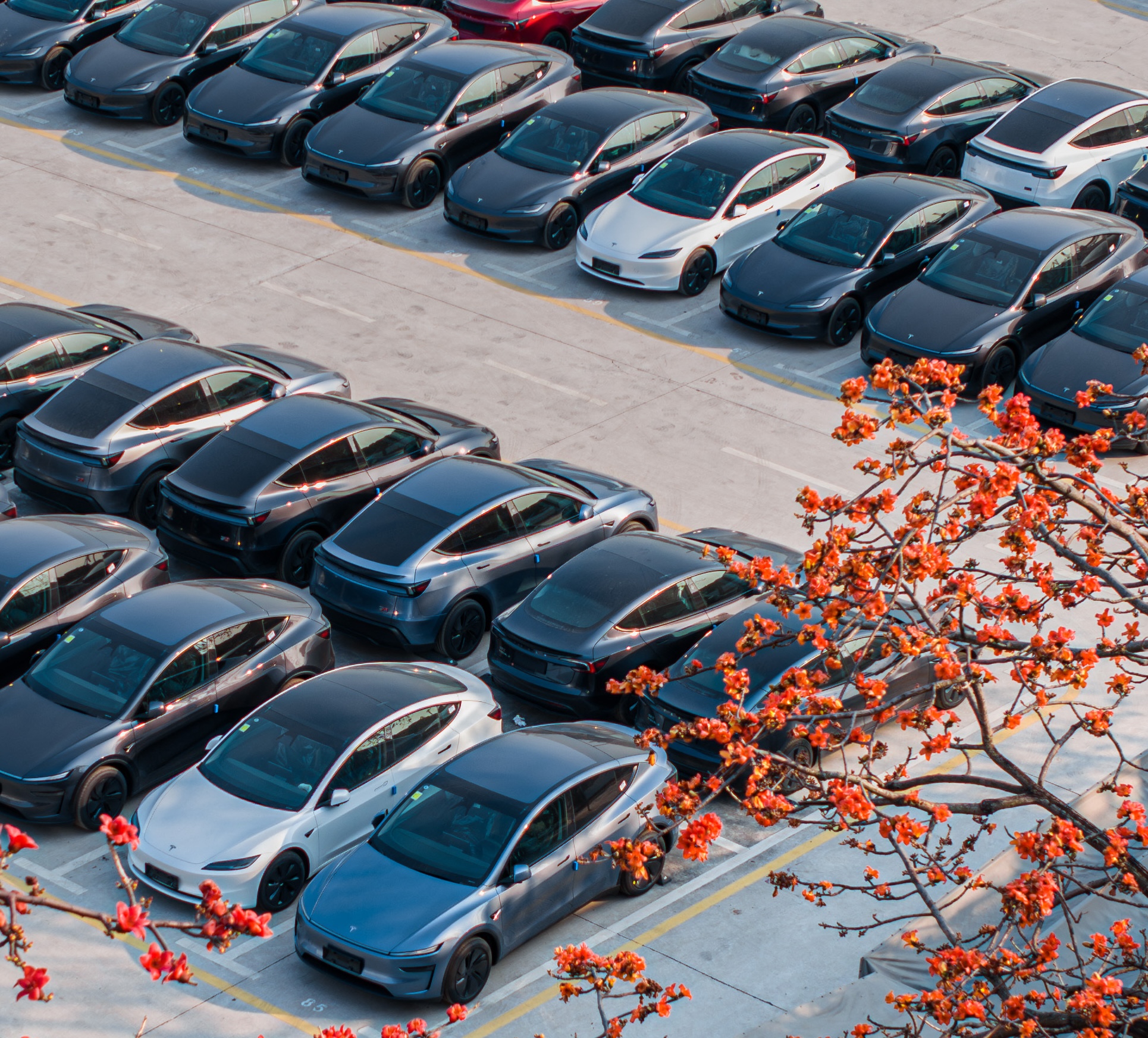
Tesla is dominating in the United Kingdom so far through 2025, and with about two weeks left in the year, the Model Y and Model 3 are leading the way.
The Model Y and Model 3 are the two best-selling electric vehicles in the United Kingdom, which is comprised of England, Scotland, Wales, and Northern Ireland, and it’s not particularly close.
According to data gathered by EU-EVs, the Model Y is sitting at 18,890 units for the year, while the Model 3 is slightly behind with 16,361 sales for the year so far.
The next best-selling EV is the Audi Q4 e-tron at 10,287 units, lagging significantly behind but ahead of other models like the BMW i4 and the Audi Q6 e-tron.
GOOD NEWS 🇬🇧 Tesla is absolutely crushing the UK electric vehicle market in 2025 💥
The numbers are in, and the dominance is clear. With an impressive amount of 42,270 vehicles delivered year-to-date, the brand now commands a solid 9.6% market share of the total auto market 🆒… pic.twitter.com/dkiGX9kzd0
— Ming (@tslaming) December 18, 2025
The Model Y has tasted significant success in the global market, but it has dominated in large markets like Europe and the United States.
For years, it’s been a car that has fit the bill of exactly what consumers need: a perfect combination of luxury, space, and sustainability.
Both vehicles are going to see decreases in sales compared to 2024; the Model Y was the best-selling car last year, but it sold 32,610 units in the UK. Meanwhile, the Model 3 had reached 17,272 units, which will keep it right on par with last year.
Tesla sold 50,090 units in the market last year, and it’s about 8,000 units shy of last year’s pace. It also had a stronger market share last year with 13.2 percent of the sales in the market. With two weeks left in 2025, Tesla has a 9.6 percent market share, leading Volkswagen with 8 percent.
The company likely felt some impact from CEO Elon Musk’s involvement with the Trump administration and, more specifically, his role with DOGE. However, it is worth mentioning that some months saw stronger consumer demand than others. For example, sales were up over 20 percent in February. A 14 percent increase followed this in June.
News
Tesla Insurance officially expands to new U.S. state
Tesla’s in-house Insurance program first launched back in late 2019, offering a new way to insure the vehicles that was potentially less expensive and could alleviate a lot of the issues people had with claims, as the company could assess and repair the damage itself.
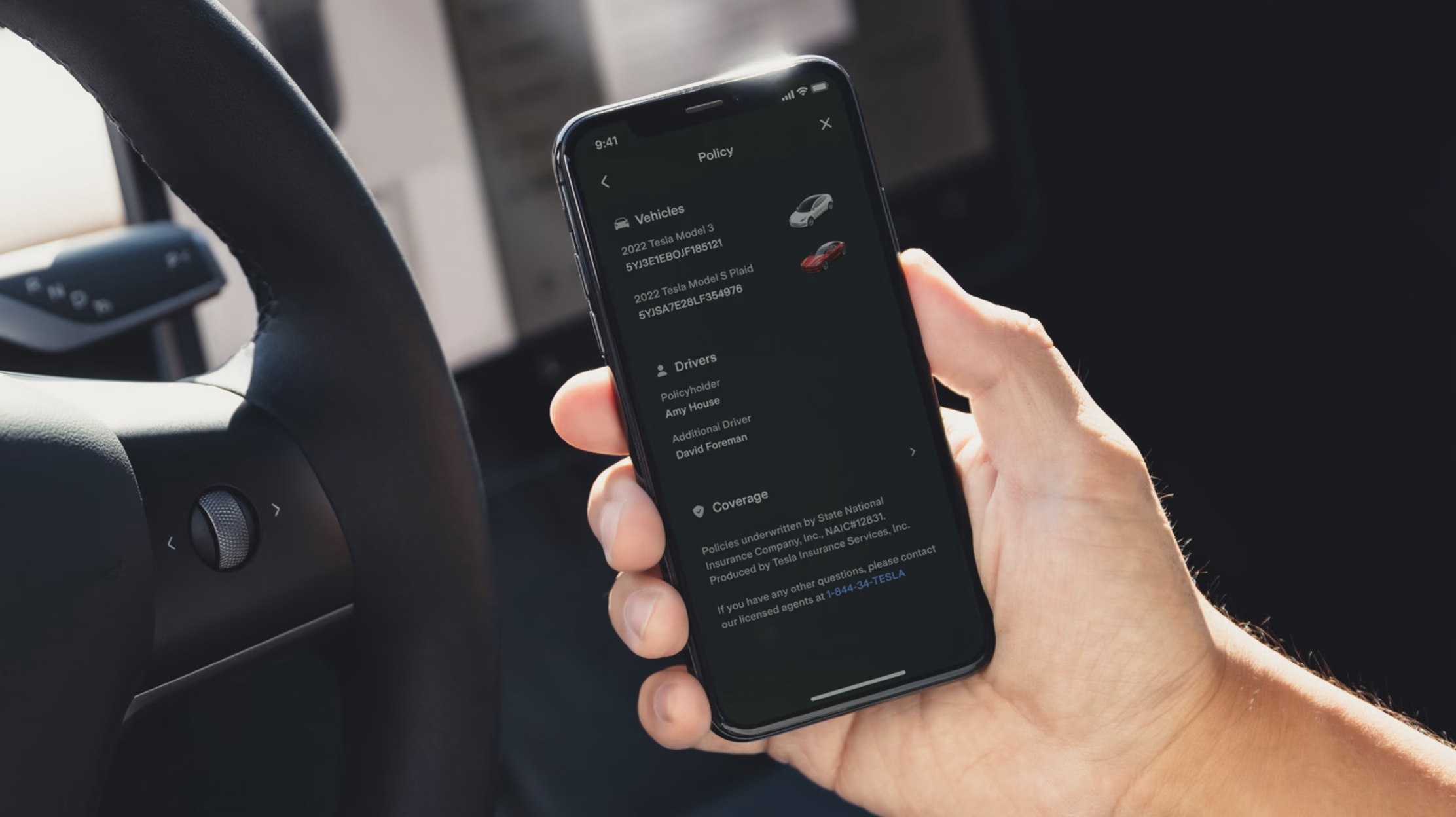
Tesla Insurance has officially expanded to a new U.S. state, its thirteenth since its launch in 2019.
Tesla has confirmed that its in-house Insurance program has officially made its way to Florida, just two months after the company filed to update its Private Passenger Auto program in the state. It had tried to offer its insurance program to drivers in the state back in 2022, but its launch did not happen.
Instead, Tesla refiled the paperwork back in mid-October, which essentially was the move toward initiating the offering this month.
BREAKING: Tesla Insurance has just officially launched in Florida.
This is the first new state to receive @Tesla Insurance in more than 3 years. In total, Tesla insurance is now available in 13 U.S. states (map in thread below of all the states).
Tesla Insurance in Florida uses… pic.twitter.com/bDwh1IV6gD
— Sawyer Merritt (@SawyerMerritt) December 17, 2025
Tesla’s in-house Insurance program first launched back in late 2019, offering a new way to insure the vehicles that was potentially less expensive and could alleviate a lot of the issues people had with claims, as the company could assess and repair the damage itself.
It has expanded to new states since 2019, but Florida presents a particularly interesting challenge for Tesla, as the company’s entry into the state is particularly noteworthy given its unique insurance landscape, characterized by high premiums due to frequent natural disasters, dense traffic, and a no-fault system.
Annual average premiums for Florida drivers hover around $4,000 per year, well above the national average. Tesla’s insurance program could disrupt this, especially for EV enthusiasts. The state’s growing EV adoption, fueled by incentives and infrastructure development, aligns perfectly with Tesla’s ecosystem.
Moreover, there are more ways to have cars repaired, and features like comprehensive coverage for battery damage and roadside assistance tailored to EVs address those common painpoints that owners have.
However, there are some challenges that still remain. Florida’s susceptibility to hurricanes raises questions about how Tesla will handle claims during disasters.
Looking ahead, Tesla’s expansion of its insurance program signals the company’s ambition to continue vertically integrating its services, including coverage of its vehicles. Reducing dependency on third-party insurers only makes things simpler for the company’s automotive division, as well as for its customers.
News
Tesla Full Self-Driving gets sparkling review from South Korean politician
“Having already ridden in an unmanned robotaxi, the novelty wasn’t as strong for me, but it drives just as well as most people do. It already feels like a completed technology, which gives me a lot to think about.”
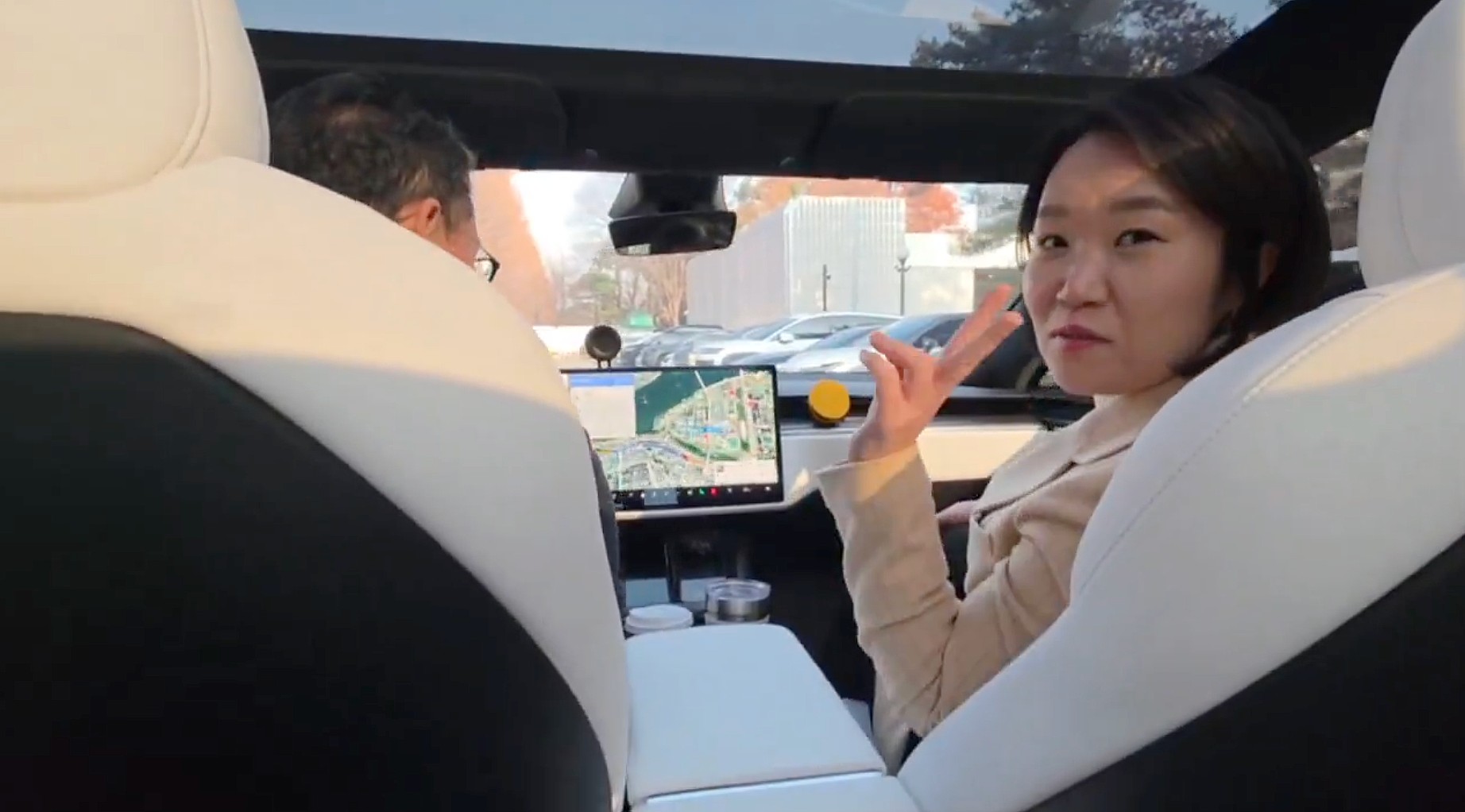
Tesla Full Self-Driving got its first sparkling review from South Korean politician Lee So-young, a member of the country’s National Assembly, earlier this week.
Lee is a member of the Strategy and Finance Committee in South Korea and is a proponent of sustainable technologies and their applications in both residential and commercial settings. For the first time, Lee was able to utilize Tesla’s Full Self-Driving technology as it launched in the country in late November.
Her thoughts on the suite were complimentary to the suite, stating that “it drives just as well as most people do,” and that “it already feels like a completed technology.”
드디어 오늘, 서울에서 테슬라 FSD 체험 했습니다.
JiDal Papa님의 모델S 협찬에 힘입어^^ 파파님 정말 감사합니다.
국회 -> 망원시장 -> 홍익대 -> 국회 복귀 코스였고요.
이미 무인 로보택시를 타봐서 그런지 신기함은
덜했지만, 웬만한 사람만큼 운전을 잘하네요.이미 완성된 기술이라고… pic.twitter.com/8pAidHBpRG
— 이소영 국회의원 (Soyoung Lee) (@im_soyounglee) December 17, 2025
Her translated post says:
“Finally, today I got to experience Tesla FSD in Seoul. Thanks to the Model S sponsored by JiDal Papa^^, I’m truly grateful to Papa. The route was from the National Assembly -> Mangwon Market -> Hongik University -> back to the National Assembly. Having already ridden in an unmanned robotaxi, the novelty wasn’t as strong for me, but it drives just as well as most people do. It already feels like a completed technology, which gives me a lot to think about. Once it actually spreads into widespread use, I feel like our daily lives are going to change a lot. Even I, with my license gathering dust in a drawer, don’t see much reason to learn to drive a manual anymore.”
Tesla Full Self-Driving officially landed in South Korea in late November, with the initial launch being one of Tesla’s most recent, v14.1.4.
It marked the seventh country in which Tesla was able to enable the driver assistance suite, following the United States, Puerto Rico, Canada, China, Mexico, Australia, and New Zealand.
It is important to see politicians and figures in power try new technologies, especially ones that are widely popular in other regions of the world and could potentially revolutionize how people travel globally.








